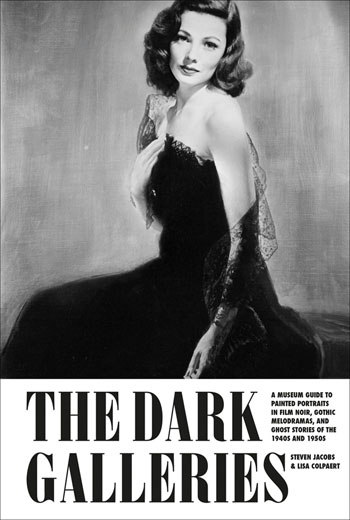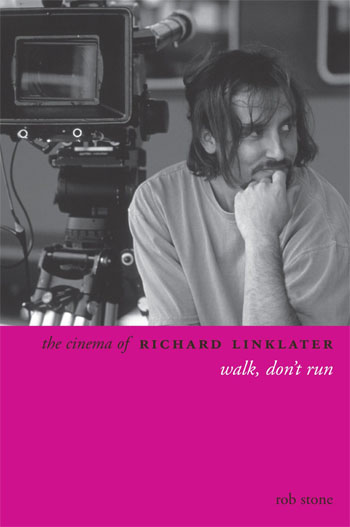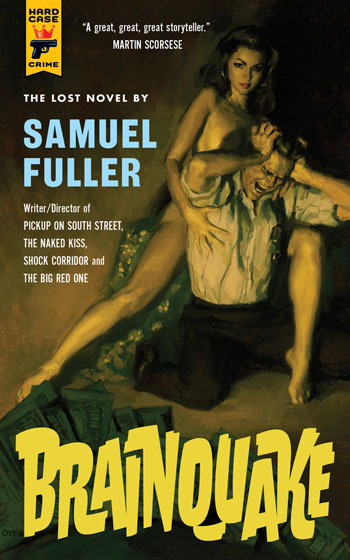While he works on his book on the American cinema of the 1940s, David Bordwell carries on posting away. Hopefully, you’ve caught up with his second entry on James Agee, Manny Farber and Parker Tyler, this one focusing on the state of the culture they’d impact. Bordwell’s also reading and making recommendations, and the first in a round posted a few days ago is James Naremore’s new collection, An Invention without a Future: “Every essay here is a polished gift from a master of the literary essay.”
Then there’s Joe Dante, a collection edited by Nil Baskar and Gabe Klinger; the contributors’ “spirit of amiable, film-geek homage is infectious…. Dante’s opposite number is Béla Tarr, whose films run the gamut from glum to morose, but they’re no less exhilarating. They find their ideal explication in András Bálint Kovács’s The Cinema of Béla Tarr: The Circle Closes.”
King Hu: The Renaissance Man is the catalog for a 2012 exhibition, “a dazzling book that pays tribute with gorgeous illustrations and informed critical commentary. Steven Jacobs and Lisa Colpaert’s The Dark Galleries: A Museum Guide to Painted Portraits in Film Noir Gothic Melodramas and Ghost Stories of the 1940s and 1950s is a “straight-faced experiment in creative criticism” that “invites you into an imaginary exhibition.”
In a second round posted just yesterday, Bordwell offers “some comments on books that push several of my buttons.” And they are:
- Minerva’s Night Out: Philosophy, Pop Culture, and Moving Pictures by Noël Carroll, who “isn’t merely the most important philosopher ever to write about popular culture. He has been for decades a major force in film theory and criticism, as well as a philosopher making contributions to moral and legal theory, historiography, and a welter of other areas.”
- Karina Aveyard and Albert Moran’s anthology Watching Films: New Perspectives on Movie-Going, Exhibition and Reception “contains 22 chapters of empirical research spread across the Europe, New Zealand, Australia, and the U.S.”
- Hideaki Fujiki’s Making Personas: Transnational Film Stardom in Modern Japan, “an expedition into a nearly sunken continent, Japanese film of the silent era.”
- Mette Hjort’s two “packed” anthologies, The Education of the Filmmaker in Africa, The Middle East, and the Americas and The Education of the Filmmaker in Europe, Australia, and Asia.
- Gunfight at the Eco-Corral: Western Cinema and the Environment by Robin L. Murray, Joseph K. Heumann, who “aren’t much concerned with cheerleading or finding villains. They want to explore how media representations of the environment have responded to various cultural pressures.”
- Jeffrey Michael Bays’s Between the Scenes: What Every Film Director, Writer, and Editor Should Know about Scene Transitions, “an entertaining and damn near exhaustive account of the ways that images and sounds can tie one scene to another.”
- And in Cohesion in Film: Tracking Film Elements, Chiao-I Tseng shows “the fine-grained patterns that emerge from the choices every filmmaker faces.”
Catherine Grant‘s hosting a guest post by Rob Stone, whose book The Cinema of Richard Linklater: Walk, Don’t Run came out in May. Stone writes about the ideas that went into the making of his video essay Between Sunrise and Sunless, “an homage to three films of flânerie: Before Sunrise, Sans soleil and En la ciudad de Sylvia.”
“Moviegoers had little trouble believing that Ava Gardner and Barbara Stanwyck might fight over a husband,” writes Jeanine Basinger in the New York Review of Books. “East Side, West Side’s [1949] conflict between wife and lover mirrored the conflict between the same two women off-screen. Here lies a challenge for the movie-star biographer: Where does East Side, West Side end and real life begin? It’s difficult for anyone to know, sometimes including the stars themselves.” The books under review here are Peter Evans’s “shameless but highly entertaining” Ava Gardner: The Secret Conversations and Victoria Wilson’s A Life of Barbara Stanwyck: Steel-True, 1907–1940: “Instead of illuminating Stanwyck, the historical commentaries tend to distance her, even diminish her.”
“Paddy Chayefsky’s Oscar-winning screenplay for the 1976 film Network was, and remains, the kind of literate, darkly funny and breathtakingly prescient material that prompts many to claim it as the greatest screenplay of the 20th century,” writes Rob Lowe—yes, that Rob Lowe—in the New York Times Book Review. “In Mad as Hell: The Making of Network and the Fateful Vision of the Angriest Man in Movies, Dave Itzkoff, a culture reporter for the New York Times, takes us behind the curtain and shows us why.”
Clayton Dillard at the House Next Door on Edgar G. Ulmer: A Filmmaker at the Margins: “Ulmer may have been a filmmaker at the margins, but Noah Isenberg’s new book is completely within the bounds of normative critical biography, constructed as a narrative that diligently marches through the outré director’s life and career with an eye toward chronological and historical enlightenment, but lacks additional engagements to elevate the work above these modest achievements.”
“Not surprisingly,” writes Jonathan Romney, “The Wes Anderson Collection by Matt Zoller Seitz—a collection of essays on, and comprehensive interviews with the director—mentions Orson Welles‘s famous remark about a movie studio being ‘the biggest electric train set any boy ever had.’… In his introduction to the book, novelist Michael Chabon suggests that Anderson’s work bespeaks ‘the ache’ of nostalgia, the yearning of many for childhood’s lost perfect world. That’s never truer than in The Grand Budapest Hotel, which depicts a world of European splendor between the first and second world wars—and its grim collapse. Anderson’s way of retrieving such a utopia, Chabon argues, is by building scale models and enclosing them in frames, just as the artist Joseph Cornell did with his boxes.”
Also in the Guardian, P.D. Smith argues that, with Film After Film: Or, What Became of 21st Century Cinema, J. Hoberman “proves himself to be one of the most intelligent and politically aware commentators on film.”
“A born reporter, who was filing stories for newspapers while he was still in his teens, [Samuel] Fuller wrote tersely and passionately about crime, war, and injustice, and carried that no-nonsense approach into pulp novels like The Dark Page and films like Pickup on South Street, The Naked Kiss, and The Big Red One,” writes Noel Murray at the Dissolve. “In 1993, while living in France, Fuller wrote Brainquake, about a brain-damaged mafia ‘bagman’ who risks his life and his livelihood to help the widow of one of his colleagues.” Titan Books will release the long-forgotten novel on September 9.
Jesse Eisenberg will publish a book of short stories with Grove Atlantic in the spring of 2015, reports Carolyn Kellogg for the Los Angeles Times.
For news and tips throughout the day every day, follow @KeyframeDaily on Twitter and/or the RSS feed. Get Keyframe Daily in your inbox by signing in at fandor.com/daily.






